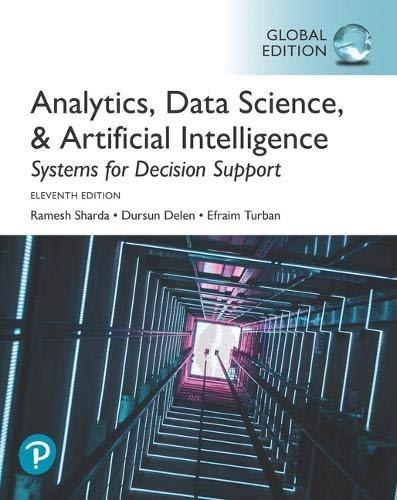Analyzing product and customer behavior provides valuable insights into what consumers want, how they interact with products,
Question:
Analyzing product and customer behavior provides valuable insights into what consumers want, how they interact with products, and where they encounter usability issues. These insights can lead to new feature designs and development or even new products.
Understanding customer sentiment and knowing what consumers truly think about products or a brand are traditional pain points. Customer journey analytics provides insights into these areas, yet these solutions are not all designed to integrate vital sources of unstructured data such as call center notes or social media feedback. In today's world, unstructured notes are part of core communications in virtually every industry, for example:
• Medical professionals record patient observations.
• Auto technicians write down safety information.
• Retailers track social media for consumer comments.
• Call centers monitor customer feedback and take notes.
Bringing together notes, which are usually available as free-form text, with other data for analysis has been difficult. That is because each industry has its own specific terms, slang, shorthand, and acronyms embedded in the data. Finding meaning and business insights first requires the text to be changed into a structured form. This manual process is expensive, time consuming, and prone to errors, especially as data scales to ever-increasing volumes. One way that companies can leverage notes without codifying the text is to use text clustering. This analytic technique quickly identifies common words or phrases for rapid insights.
Text and Notes Can Lead to New and Improved Products
Leveraging the insights and customer sentiment uncovered during a text and sentiment analysis can spark innovation. Companies such as vehicle manufacturers can use the intelligence to improve customer service and deliver an elevated customer experience. By learning what customers like and dislike about current products, companies can improve their design, such as adding new features to a vehicle to enhance the driving experience.
Forming word clusters also allows companies to identify safety issues. If an auto manufacturer sees that numerous customers are expressing negative sentiments about black smoke coming from their vehicle, the company can respond. Likewise, manufacturers can address safety issues that are a concern to customers.
With comments grouped into buckets, companies have the ability to focus on specific customers who experienced a similar problem. This allows a company to, for instance, offer a rebate or special promotion to those who experienced black smoke.
Understanding sentiments can better inform a vehicle manufacturer's policies. For example, customers have different lifetime values. A customer who complains just once but has a very large lifetime value can be a more urgent candidate for complaint resolution than a customer with a lower lifetime value with multiple issues. One may have spent $5,000 buying the vehicle from a used vehicle lot. Another may have a history of buying new cars from the manufacturer and spent $30,000 to buy the vehicle on the showroom floor.
Questions for Case 6.7
1. Why do you think sentiment analysis is gaining overwhelming popularity?
2. How does sentiment analysis work? What does it produce?
3. In addition to the specific examples in this case, can you think of other businesses and industries that can benefit from sentiment analysis? What is common among the companies that can benefit greatly from sentiment analysis?
Step by Step Answer:

Analytics Data Science And Artificial Intelligence Systems For Decision Support
ISBN: 9781292341552
11th Global Edition
Authors: Ramesh Sharda, Dursun Delen, Efraim Turban





